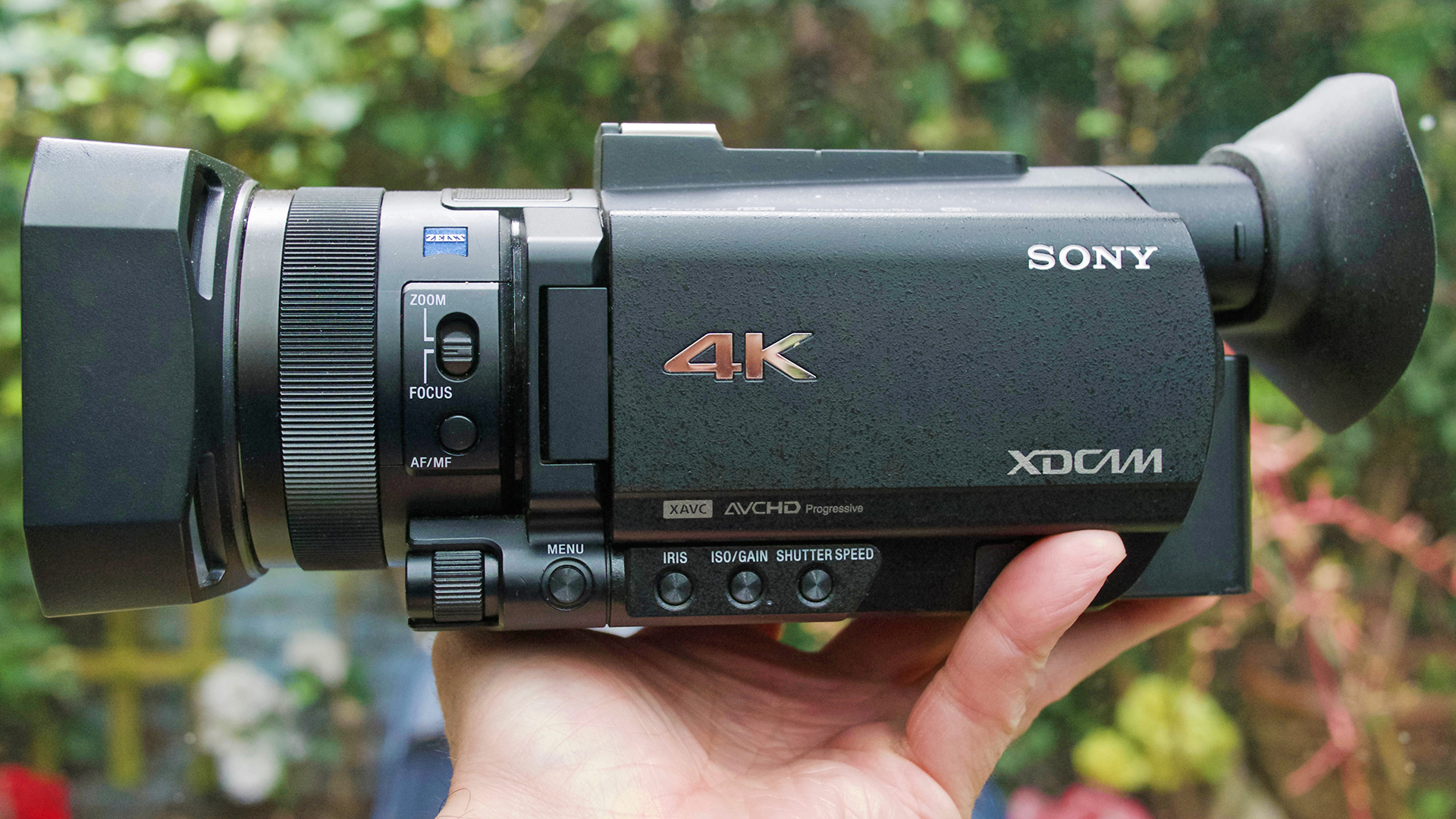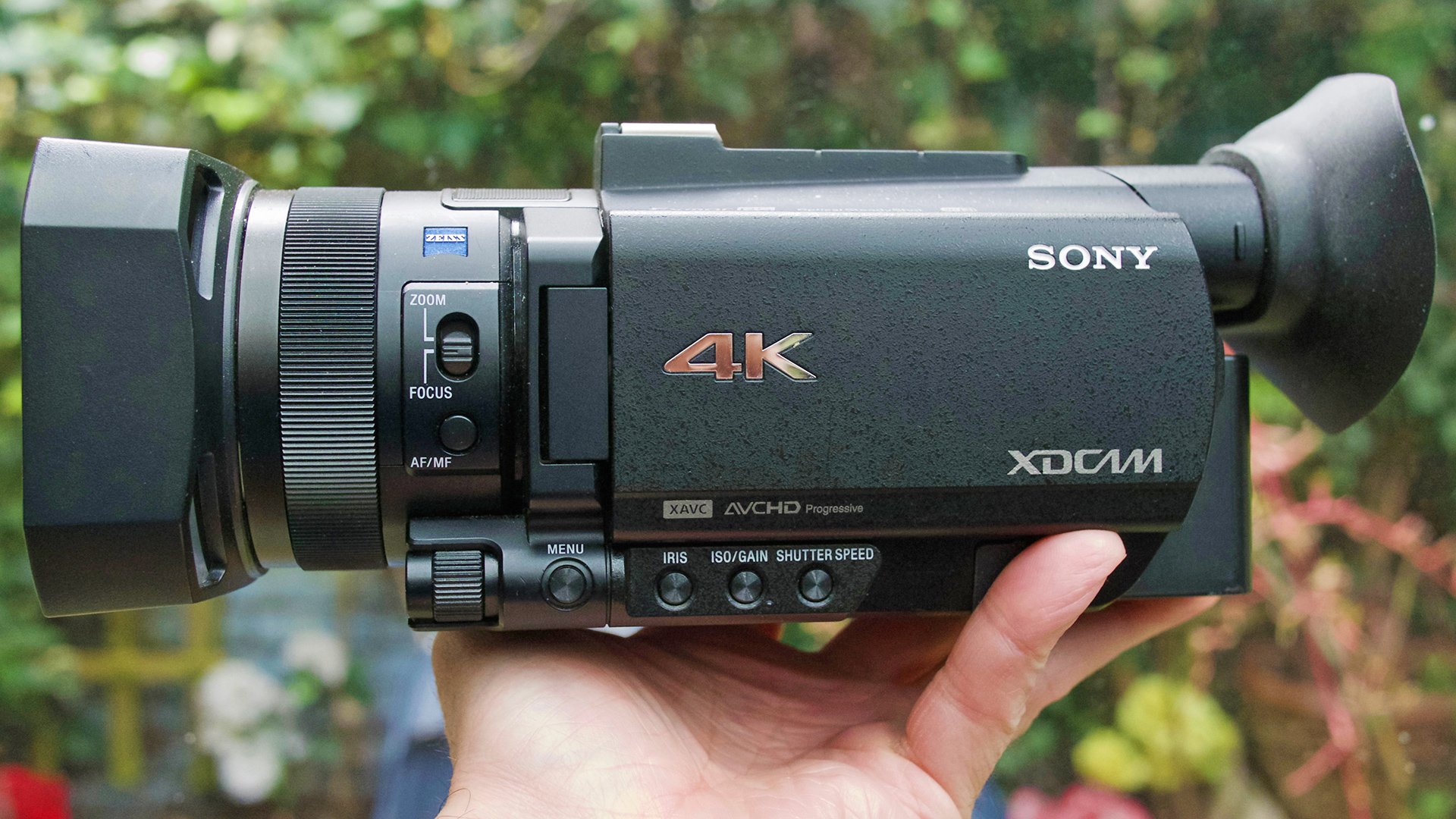

Roland Denning continues his journey to find out whether the Sony PXW-Z90 really and truly is an Aaton documentary camera for the digital age.
In the first part of this article I discussed what I needed in a professional documentary camera and how I ended up with what might seem an unlikely candidate – the Sony PXW-Z90. Built in NDs, zebra stripes, focus assist, two decent XLR inputs, 4K and, crucially, a wide-range zoom lens – all the things you expect on a pro video camera. And it has a 1”chip, which I think, in principle, is a near-optimum size for a documentary camera.
The Z90 is tiny. Take of the top handle that contains the XLR inputs and you have an even smaller camera. The unassuming size is a great when you want to be discreet or travel light. But there is a disadvantage to it: on a commercial job, people just might not take you seriously – it doesn’t look like a proper camera. Some clients will think you’ve compromised. But don’t be fooled; this is a camera capable of great results.
Simon has already given this camera an excellent and thorough review, and I don’t intend to repeat that, but rather examine whether the camera can live up to expectations in my particular world of observational documentary and performance. So I’m not going to go into its range of codecs, S-LOG and HLG options, slow motion or networking functions.
So what’s it like in practice? Firstly, it’s got a great lens. It’s a Zeiss 12 to 1 optical zoom which, with Sony’s ClearView digital enhancement, becomes 18 to 1 - or 24 to 1 if you are shooting in HD. You may not like the idea of digital zooms but, in practice, it works, and it works extremely well. The lens is effectively parfocal, has minimal breathing and distortion and is satisfyingly sharp. I’m sure Sony must have used a multitude of digital and electronic trickery to get it to function so well, but that is how built-in zooms can offer unmatched performance for the price. You’d be hard pressed to find a separate 4K zoom of this range for less than 6 times the cost of this complete camera kit, so this is some sort of miracle.
Recalibrating one’s prejudices
Sometimes one has to recalibrate one’s own prejudices. I’ve always been an advocate of shoulder-mounted cameras, but they aren’t on offer in this price range for the spec I’m looking for. I don’t like the ‘handheld’ camera form with the viewfinder in line with the lens, unless the camera is light enough to be supported by the wrist alone. But the Z90 is light – it weighs around a kilo – and comes with very effective stabilisation. The stabilisation is no substitute for a gimbal or a Steadicam, but it does avoid the flapping around that is the curse of lightweight cameras. There is an excellent OLED viewfinder, as well as the flip-out LCD screen, so you can steady the camera by pressing it to your eye, if that’s how you like shooting. It’s a great camera for discreet shooting, but it’s also perfectly fine on a tripod or a dolly with a remote zoom.
I’ve grown up with separate, directly connected lens rings for focus, zoom and iris. The Z90 has one lens ring (it can be set for either focus or zoom) and a multi-function dial-knob for iris. This does take some getting used to, but it works. However, I still yearn for conventional independent lens rings.
Autofocus is something I’ve always avoided in the past. But times change and eyesight deteriorates. When working at 4K resolution, a picture that looks sharp in the viewfinder can actually be soft, and you find yourself relying on focus-assist functions like enlargement. Following focus by eye becomes perilous. Autofocus has now got very good indeed and the Z90 has a new system that not only includes face recognition but a huge range of adjustments for setting the autofocus speed and sensitivity for different situations. In addition, it offers peaking, magnification and touch-screen spot focus.
This camera would not be possible without a huge range of proprietary technologies that a vast company like Sony can embrace – sophisticated autofocus, stabilisation, ClearZoom and other digital lens enhancements. This is an area where smaller manufacturers relying on off-the-shelf components and a lot of imagination can’t really compete.
What else? Batteries last up to half a day of shooting. Audio is clean, it records on to two SD cards giving you many hours of recording time, and one card can be used for simultaneous back-up or proxy recording. It’s broadcast standard, 4:2:2 10-bit in HD, but only 4:2:0 8-bit in UHD, and UHD is restricted to a frame rate of 29.97 or 25fps. That may or may not be an issue for you.
So, as far as handling goes, I love this little camera. Its diminutive size is, overall, a huge advantage. The pictures are very pleasing too; the camera comes with ten picture profiles, all of which are extensively customisable. You will find plenty of people on the internet who will offer up their particular custom profiles, but use them at your peril! There is little help from the Sony manual here – it’s really a case of trying them out and finding what suits your style (I generally use PP3). But the quality of the pictures belies its small size – they are would you would expect from Sony’s XDCAM range and well up to the standard of much larger and more expensive 4K cameras.
Low Light
The Z90 is not a low-light camera. When gain is set to 0db, the native ISO of this camera, by its own reckoning, is 250. The maximum aperture of the lens at the long end is F4.5. This means in many everyday situations you don’t have quite enough light to shoot. Luckily you can push the gain by 6 or 9db and get perfectly acceptable results. Beyond that, the pictures begin to get a bit noisy. This is a couple of stops short of what I really need; but with the gain pushed slightly more than I really want to, I get by. In the age of dual-ISO MFT sensors with ISO ratings in the thousands, this seems an anachronism; I was used to better low-light performance from cameras a decade ago.
So there you have it. A great little camera, capable of fantastic results. No, I would not shoot a drama on it, but for documentaries, apart from the significant drawback outlined above, it is almost perfect. I have been won over by small lightweight cameras – I would not now want to return to the heavy ENG form. But I’m still searching for my perfect doc camera.
Anyway, here is some stuff I‘ve shot recently on the Z90 in a variety of lighting conditions (all HD rather UHD, I’m afraid, because that was what was required) :
Tags: Production


Comments